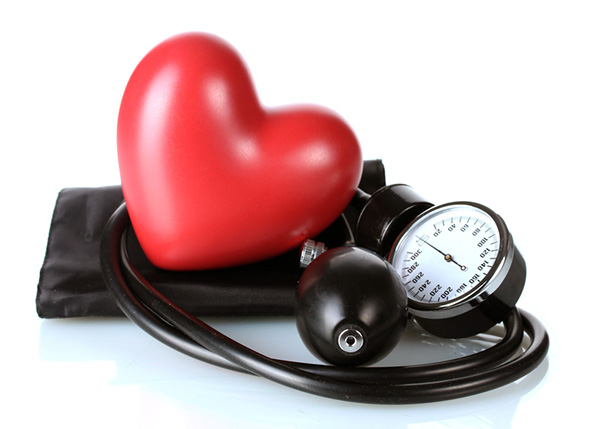Pre-Hypertension
Reviewed by Robert Ehrman, MD

If you think your blood pressure is okay because you’ve never before heard the words, “You have high blood pressure,” think again. Take some time to learn about the newest blood pressure guidelines from the government’s National High Blood Pressure Education Program. These guidelines define a new category for blood pressure that is higher than normal. It’s called “pre-hypertension.”
Pre-hypertension: New guidelines
Think of pre-hypertension as blood pressure that is higher than normal, but not high enough to be diagnosed as high blood pressure. The new definitions released by the government in 2003 were published to make it known that blood pressure even a little bit above normal presents dangers and needs treatment. Pre-hypertension is defined as blood pressure between 120/80 and 139/90 (See chart below). Like prediabetes, pre-hypertension means you should try to control or, better yet, reverse the condition. It means that unless you make some changes soon, you are likely to develop true high blood pressure in the future.
The risks of pre-hypertension
Having blood pressure that is even a little bit higher than normal can put you at risk for heart attack, stroke and kidney disease. This is important for people with diabetes to know because high blood pressure is very common among people with diabetes. Almost two-thirds of people between the ages of 45 and 65 who have diabetes will also have high blood pressure. An additional 25 percent of people with type 2 diabetes will have pre-hypertension. And don’t forget that blood pressure control can help lower your risk for a diabetes complication, such as eye and kidney damage.
Do I need to take medicine?
If you have pre-hypertension, it is important that you and your healthcare provider work to lower it. The goal is to get it to 120/80 or lower (130/80 if you have diabetes). If you get your blood pressure within a healthy range, you may not need to take medication. Talk with your health care provider about steps you can take to keep from getting hypertension. This will help you reduce your risk of developing heart attack, stroke or kidney disease.
Most people who have pre-hypertension don’t need to start on blood pressure medication. The best way to treat pre-hypertension, according to the National High Blood Pressure Education Program, is to make a few simple changes to your lifestyle. The same advice is true for prediabetes. Here are some ideas:
- Increase physical activity: Get your healthcare provider’s approval if you’re not used to being active. Start by walking a few minutes every day. Try to be active for at least 30 minutes a day, five days a week.
- Eat healthy foods: Enjoy fruits, vegetables, whole grains and low-fat dairy foods. Try to limit the amount of trans fat you eat.
- Lose weight if you are overweight: Every 10 pounds of weight loss can help drop your blood pressure by up to 10 points.
- Eat less salt and high-sodium foods: You should not exceed 2,400 mg of sodium per day. Don’t use the salt shaker and limit alcohol. No more than two drinks per day for men and one for women. Check out the related story below for more tips to lower your sodium intake.
The first step is to learn what your blood pressure is. Is it normal, high or in the new stage called pre-hypertension? If your blood pressure is even just a little bit high, take action. Your healthcare provider or Costco pharmacist can answer any questions you may have. A few changes in your lifestyle now are likely to help you control your blood pressure in the future.
Tips to Lower Sodium
According to a recent report from the Institute of Medicine—the scientists who provide government agencies with advice about nutrition guidelines—nearly all men and about three quarters of women eat too much sodium. If you want to limit the amount of sodium you eat, here are guidelines for you to think about as you buy your foods and prepare them:
- Choose and use as much unprocessed fresh food as you can. This means buying fresh fruits and vegetables. If you buy processed vegetables, choose frozen vegetables that don’t have sauces and seasonings.
- Choose and use fish, chicken and meats that are not processed, smoked or prepared with sauces or seasonings.
- Choose snack foods that have less than 150 to 200 mg of sodium for each serving.
- Limit the amount of sodium in side-dishes to less than 300 to 350 mg for each serving.
- Choose frozen meals or fast foods that have less than 600 to 800 mg of sodium for each serving.
- Choose natural cheeses, such as mozzarella, rather than processed cheeses.
- Make your own salad dressings with healthy oils, such as corn or safflower, and add vinegar, mustard, garlic and the like. These are all very low in sodium.
- Use plenty of herbs and spices to season your foods. These are very low in sodium.
- Watch out for items like garlic salt, lemon pepper or mixtures of seasonings as they often have lots of added sodium
- Use seasonings like lemon, lime, vinegars or mustard to increase the flavor in your foods without extra sodium.
- Limit the amount of salt you use in cooking and at the table

